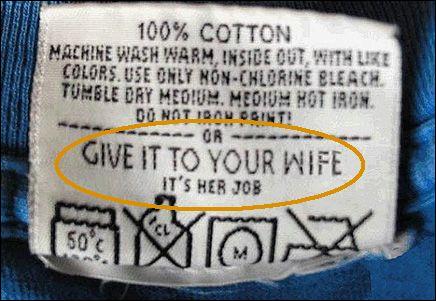Picnic cancelled due to Ominous Clouds of Doom and the still-sopping wet grass. So, since I was NOT just staying in AP House and eating sandwiches (they’d bought the food already, so they just served it in the lobby), I ducked out and ventured my way to the ̶N̶i̶n̶e̶ Eight Hells of Beppu.
Why do I cross out nine? Oh, so you noticed. This is because Japan is extraordinarily superstitious of the number nine. It doesn’t exist to them, or shouldn’t. Even the bus fare board has nine either hollowed out or gone entirely. So, though there are nine hells, we pretend that there are eight. You only get tickets for eight, every sign says “eight hells,” but there are actually nine. Interesting, huh? The root of this superstition is that the Japanese word for nine (kyuu or kuu) sounds a lot like the word for “suffering” (kuu).
These ‘hells’ are actually hot springs. They’re one of Beppu’s most famous tourist attractions, but local people go as well when they want to be reminded of nature’s awesome diversity. But what exactly are they? Why go so many miles just to look at hot springs? Well… let’s find out.
When you get to the Umijigoku Mae bus stop (catch the number 41 bus from Beppu Station’s West Exit), you will be directly in front of three of the nine hells. The first is Umijigoku, or “Sea Hell.” At the ticket booth, say, “Zenbu jigoku no kippu o ichimai onegaishimasu” (One ticket to all hells, please). This costs 2000 JPY, but is preferable to paying 400 JPY for each hell (you save 1200 JPY just to start with–more money for souvenirs). You will receive a small booklet with eight tickets inside. Now, enter the first hell.
1. Umijigoku (Sea Hell)
Each of these attractions is not only a hell, but also a national park. There is beautiful scenery everywhere you look:
The first hell is famous for its cobalt-blue water. The water itself is blue, due to minerals found just underneath the surface of the Earth. It’s a gorgeous color:
There is also a Shinto shrine that visitors can pray to (the red gates in the first and second picture lead to this). You can make offerings and pray, but it’s considered rude to take pictures of such a sacred place, so don’t do that. If you visit the shrine, just remember to bow to its gates after you leave. It’s just respectful, and I’m sure whatever deity you worship won’t mind. 😛
Now, then, I should warn you. These hells are set into the mountainside. This means that a lot of them contain many hills and steep paths. Be careful not to slip, and if you’re not in decent physical condition, think carefully about whether or not you should go on the walking tour. It is roughly 750 meters of walking, so that’s 7 1/2 football fields. Only, uphill most of the way.
2. Oniishibozu Jigoku (Stone Pot Hell)
The next hell is named for its vast bubbles which break the surface and appear to be almost like the shaven heads of monks. The water is stone-gray in appearance and looks almost like liquid granite:
This hell also includes the “Demon’s Bed,” a collection of rocks that emit bursts of high-temperature steam. Compared to the beds at APU it looks really comfortable! Okay, so I’m joking. But have a picture.

3. Yamajigoku (Mountain Hell)
This is the third hell. It’s actually not a true onsen like the others, but a pile of steaming rocks that give off extreme levels of heat. There is also a small zoo you can walk through.
The shop is a place where you can buy food prepared using hot spring steam–onsen tamago (hot spring eggs) are one of the most famous foods served by these shops. You can also get steamed corn on the cob, Japanese sweet potato, and even pudding (if you don’t mind eating it warm!).
So, you leave the third hell and wonder, where the heck am I? Where’s the next hell? The map is useless, so don’t even look at that. Instead, face Umijigoku (don’t walk there, just look, you’ll see it), turn 180 degrees, and continue down this path. In about two minutes, you’ll see the next hell.
4. Shiraike Jigoku (White Pond Hell)
This hell is beautiful and unique, featuring almost milky white water:
5. Kamado Jigoku (Cooking Pot Hell)
This hell is one of the smaller ones, mostly because it features a restaurant where hot spring specialties are served. This is where most people on the full tour get lunch, because its menu offers the widest variety. There are a few points of interest, however (namely, the “entrance to Hell” pictured below):
You can drink water from the hot springs at the stand pictured above, but it’s 80-90 degrees Celsius, so be wary of that (the sign actually reads “Chotto Atsui Yo!” or “It’s a little hot, really!”). There are also stands where you can wash your hands in hot spring water (it’s really smooth feeling, though very hot).
6. Oniyama Jigoku (Mountain Monster Hell)
This is an interesting hell because it is actually a scientific research project as well as a tourist attraction. Crocodiles are bred here, in the extremely high-pressured steam that billows off of the hot water:
7. Kinryu Jigoku (Golden Dragon Hell)
Exactly What it Says on the Tin, this hell features a giant dragon statue roaring steam and a large greenhouse heated by hot spring steam.

8. Chinoike Jigoku (Bloody Pond Hell)
To get to this hell, find the Kannawa bus stop and take the NUMBER SIXTEEN BUS (NOT the sixth bus. >_>;; Stupid ears failing me.) about three kilometers to the final two hells. This one is the most famous of the Nine Hells. It is, quite simply, a vast lake of what appears oddly like blood. The clay of this lake is also red, and is used as a treatment for various skin diseases. So, without further ado, here’s all of the pictures of blood-red water I took while wandering around:
And of course, one of the possessed table, since that’s just plain cool.
9. Tatsumaki Jigoku (Spout Hell)
Well, this is it. The ninth hell. It’s actually the smallest one, but is still cool despite this. It features an amphitheatre surrounding an unassuming crack in the ground. Watch and be amazed as it… does nothing. Take a seat, stretch your legs, relax. For this hell only bursts into life every twenty to thirty minutes, and only for five minutes at a time.
What it is, in fact, is a geyser. Once it begins to erupt, people swarm around to get pictures, so be quick. Here, have a look:

After you finish ooohing at the beautiful spray, head back the way you came and go souvenir shopping for all your friends so that you can say “I went to Hell and back!” and prove it.





























































